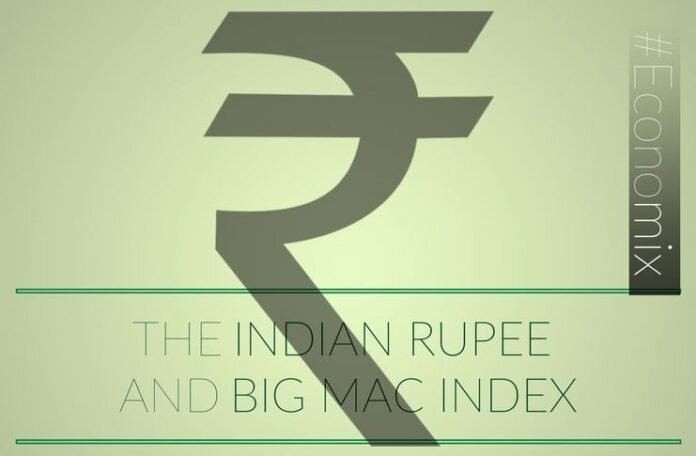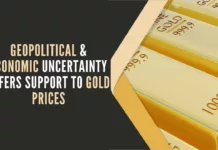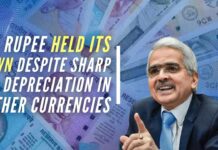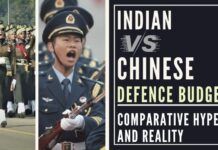
The Economist developed the Big Mac index, in a light hearted vein, with no grounding in to economics or reality. Big Mac is not something that is a universal meal outside the USA and definitely not in India. In fact, India does not have ONE uniform item that is consumed across the country. McDonalds are in an early stage in this country. And the Big Mac as available in the US is certainly not the same as is available in India.
A weak rupee is a sign of chronic illness.
According to the Big Mac Index, the US Dollar should be worth around Rs.26 or so or say Rs.30/- if we go by what is the considered view of the author Sree Iyer, on his article titled Why the Rupee exchange rate should be 30 to a dollar.
As against this, the official exchange rate is around Rs.67/-. In other words, the rupee is undervalued. This topic arose from a Question and Answer session with Dr. Subramanian Swamy at the Indian Merchants Chamber (IMC) meeting in Mumbai on June 16, 2016. According to Dr. Swamy, Rupee is undervalued for 3 reasons:
- Participatory Notes (PN) allowing withdrawal of Hot Money and distorting the Stock Market
- Speculation in the Stock market due to forward trading of commodities, PNs
- Black Money
I hold a contrary view. The rupee, to my mind, is overvalued. The reason is simple. Today, with trade borders very thin, global prices for various commodities are more or less on par, except that some items could be costlier through a tariff imposition or made cheaper by a government subsidy.
One factor that is important, to my mind, is the difference in inflation between two countries that drives the exchange rates. Going back to the sixties, except for one spell around the 1974 oil shock, inflation in India has been always higher by around five to six percent every year.
Indians have two major pressures on the dollar rupee rate. The imports of Oil and the import of Gold…
In the early days, we had ‘administered’ exchange rates. This means that foreign exchange was rationed. Indian exports were tiny and finding $$ to pay for imports was an issue. So the demand for $$ was artificially kept down.
In 1947 the $ was around Rs.3.30. We were linked to the Sterling. In 1949, the Sterling was devalued and the $ fetched Rs.4.75. This rate was maintained till 1966, when India had its first devaluation. The $ was now worth Rs.7.75. If I take an inflation differential of five percent from here, the $ becomes worth around Rs.86, today. At a six percent differential it is worth Rs.138/-.
Demand and supply of $ vs the Indian rupee is what in reality sets the rates. If there is an excess supply of $$, it becomes cheaper and vice versa. If we look at the structure of our demand and supply, our exports always lag imports. Thus, fundamentally, we are a deficit nation, which means that the rupee will keep sliding in to the pits, till the rupee cost starts deterring imports.
However, the rupee slides a little slowly because we get an inflow of $$ from some other sources – Our NRIs who remit foreign currency are probably our saviors. At some point, it will slow down as the third generation NRIs seek to make homes abroad and not remit anything. The other factor that helps India is the attractiveness as an investment destination (FII plus FDI). This keeps getting messed by successive politicians, so we get trickles as opposed to a flood that China received in the eighties and nineties.
Indians have two major pressures on the dollar-rupee rate. The imports of Oil and the import of Gold are the main reasons for the dollar getting relatively more in demand. So, we have to pray that Indians start detesting gold and Oil becomes an unnecessary import if technology for alternative energy is allowed to bloom.
Taking the price of Big Mac or comparing rentals of a 1 BHK in New York vs Mumbai will give some gossip worthy numbers, but ignore reality. Our per capita is around $2000 and the US per capita could be around $50 to 60 thousand. So if we take the number of days of per capita income spent on food, clothing, rent, housing, etc we will get a better picture. And in any one country, these costs will vary from city to city and within the city, from place to place.
Big Mac Index is a nice cocktail conversation topic.
Let us recognize the factors that make the rupee slide continuously and shape our policies to do something in that direction. A weak rupee is a sign of chronic illness. I will be very happy the day the rupee is on par with the $. In the meanwhile, if we want some joy, let us have a new currency, where a hundred of the existing INR is converted in to ONE NEW INR. And maybe that will give a boost to the debased currency.
Solutions like nationalizing foreign assets of Indians, catching black money, controlling rupee etc are good for sloganeering. Doing the right things to make the Rupee attractive is what we need. It is a process and not a one-night change. Maybe we will get a leader one day, who will lead us with the long term in view. The right economic actions should also be combined with a good legal system that recognizes intellectual property as well as guarantee safety of capital. Our legal system is in need of urgent fix. That alone can give enormous respect for the nation and bring in a flood of foreign capital. Let us recognize the fact that we are short of capital.
Note:
1. Text in Blue points to additional data on the topic.
- Selling the family jewels – Some thoughts on what to do with the RBI treasure - January 3, 2019
- The Indian Rupee and the Big Mac Index - August 24, 2016











How does FDI not drive inflation up? All of a sudden as a buyer I have to compete with capital that is exposed to a lower tax rate and inflation rate than my capital. Resident Indians can never afford to compete with outsiders on paying for items, because there is a limited supply and the demand from FDI will drive up the prices of the limited supply.
There ought to be a ban on FDI that comes in to do anything other than build physical/tangable infrastructure.
As Nathan pointed out, considering an inflation differential of 5 percent from 1966 to 2016 results in 1$=86 rs. But where have you accounted for the inflation of $ ?? Is 1$ worth the same as it was in 1966 ???
Interesting article.Mr Balakrishnan is one of those who heckle Dr Swamy’s ideas on economy/politics,there are many examples of it in his tweets and this article addresses why he is not in favour of what DrSwamy is propagating either on economy or getting back black money. At least in the case of black money / corruption he is correct as very little will get done.Modi is not interested , jaitley is part of the problem.Finito..Coming to exchange rates,He has made an interesting point of extrapolating inflation to exchange rate.Was there no inflation prior to 1947,was the imports since 1966 far outweigh what we exported relative to 1947 $$/Rs situation? His contention is that Rs is still over valued.Does the continuous increase in fuel prices ( exorbitant increase in fact) lead to higher inflation?If so, if Rs gets to 40 vis a vis $, will it not reduce fuel prices which will lead to reduced inflation? Food for thought and I will be happy to read counter views on this article.Hope pGurus will have someone knowledgeable to take a look at what Mr Balakrishnan has said in this.
“If I take an inflation differential of five percent from here, the $ becomes worth around Rs.86, today. At a six percent differential it is worth Rs.138/-.”
The US dollar has lost 98% of its value. The figures /statistics given by the Bureau of Statistics in the US is plain BS- BULLSHIT. Check John Williams ( i presume you know who it is ) for real figures. Over $ 9 trillion has gone unaccounted at the Pentagon. That is an admitted figure.
The Debt to GDP in India is around 67%
The debt to GDP of the US is over 120 % without considering all the unfunded liabilities , estimated at over $200 trillion.
You conveniently avoid the above besides other data.
I guess you still work for DSP Merril Lynch or Crisils Masters ,the S & P , the Index run by Wall Street for its own ends.
Other than that here author has conveniently ignored the inflation in US, which was very high in 70s and 80s. It was moderated after 1992.
This article also sounds like a cocktail table chit-chat.
Another major issue with US$ which the author has conveniently ignored is the issue of US$ floating outside of US.No one Knows what these numbers are.These floating US$ cannot get back into US through a very clever crooked system.In other words,US simply print their $$$ and use it for all their imports and these dollars cannot get back into their country.Everyone else in the world is holding these floaters and they cannot call the bluff because what they are holding will become worthless paper overnight.That is why it is dangerous for India to hold too much $$$ beyond what is necessary.One of ways to control that is export what is essentially beneficial to us and import those which are necessary to us.I think the whole US$ to Rs exchange rate is a bogus rate concocted by well placed “COOLIES”including in our government.This charade will continue and this is one of the major reasons people Like DrSwamy or DrVaidya will not be allowed anywhere near Finance ministry or RBI.These are dens for suave “COOLIES” masquerading as “learned men”,cutouts like MMS used by sonia to fool the public
A minimal foreign exchange of dollars necessary should be calculated and held. The remaining should be used to build gold reserves. That should insulate India from any future bs pulled by the US.